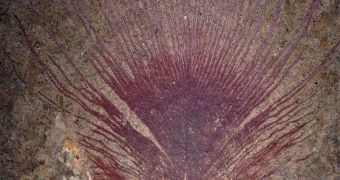Bird species are widely known for their exquisite plumages, which are used to attract mates and show who is the boss within a group. For a long time, paleontologists and ornithologists wondered where this behavior originated, or exactly how old this “marketing mechanism” was. Recent analyses of fossilized bird feathers seem to indicate that even the early ancestors that lived more than 40 million years ago had the traits, the National Science Foundation (NSF) reveals.
In a new scientific study published online in the August 26th issue of the journal Biology Letters, experts at the Yale University describe the iridescent glow that they tracked down in the prehistoric creatures. This trait is characterized by the feathers' changing color before your very eyes, entirely depending on the angle you watch them from. The recently analyzed fossils were extracted from the Messel Shale, in Germany, and their internal structure was observed with a powerful electron microscope.
Investigations revealed a smooth layer of melanin structures, called melanosomes. “Although fossil feathers have been known for many years, determining their original color has not been done. Discovery of a color-producing nanostructure in a fossil feather opens up the possibility that we someday be able to determine such colors in fossil birds, as well as in feathered dinosaurs,” NSF Division of Earth Sciences Program Director and paleontologist H. Richard Lane explains.
Melanosomes look like microscopic tubular structures, and they have been discovered in fossilized feathers over the years. But, until now, researchers have always believed that the formations were in fact remains from bacteria that had digested the feathers after the animal died, and before the remains turned to stone. “The feathers produced a black background with a metallic greenish, bluish or coppery color at certain angles – much like the colors we see in starlings and grackles today,” YU expert Richard Prum, who has also been one of the authors of the new paper, explains.
“The discovery of ultra-structural detail in feather fossils opens up remarkable possibilities for the investigation of other features in soft-bodied fossils, like fur and even internal organs,” YU scientist Derek Briggs, also a co-author of the research, says. “The 'Holy Grail' is reconstructing the colors of feathered dinosaurs. We are working hard to determine if this will be possible,” the lead author of the paper, YU graduate student Jakob Vinther, adds.

 14 DAY TRIAL //
14 DAY TRIAL //